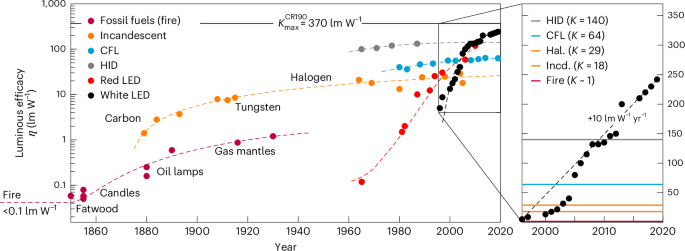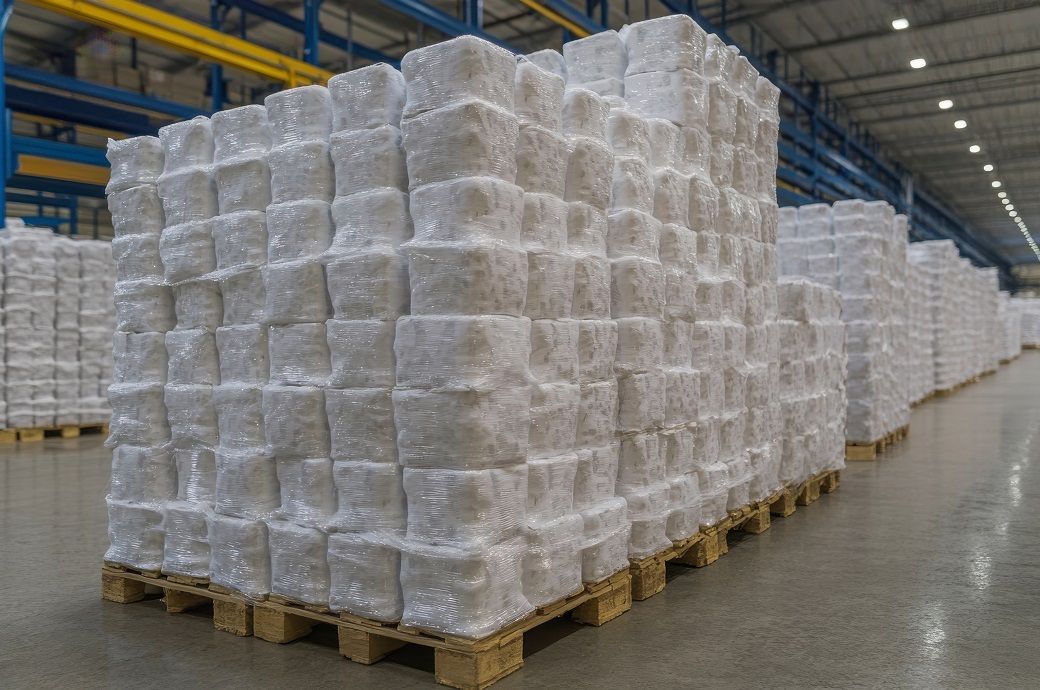Glimpact study reveals 90% of a garment’s environmental impact happens before it’s made
Textile waste Credits: Martin Bernetti / AFP. It's no secret that the fashion industry is a rather dirty one. The ecological impact of apparel production has been closely followed over the years as climate change awareness continues to gain traction. For example, textile production is estimated to contribute approximately 20 percent of global clean water pollution, primarily due to dyeing and finishing processes. Additionally, a single wash of polyester garments can release up to 700,000 microplastic fibers, which pose a significant risk of entering and accumulating in the environment, eventually ending up in our food chain and systems. What's more, in 2020, the textile sector ranked as the third largest contributor to water degradation and land use, according to the European Environment Agency. That year alone, producing clothing and footwear for each EU citizen required, on average, nine cubic meters of water, 400 square meters of land, and 391 kilograms of raw materials. However, while many consumers may think the manner in which their clothing is assembled or transported plays the biggest role in its ecological footprint, a new study from Glimpact has found otherwise. Organic Cotton Credits: Malicky Stanley Boaz für CmiA In its study, Glimpact, the first platform to assess the full environmental impact of products and organizations using its Global Impact Score tool, reveals that 90 percent of a garment's environmental impact occurs before it is even stitched together. Using a methodology adopted by the European Union, Glimpact assessed the true ecological impact of apparel from several well-known brands, including Patagonia, Reformation, H&M, Ralph Lauren, and Alo Yoga, and found that carbon emissions accounted for only 23 percent of a typical apparel product's environmental footprint. Packaging & distribution account for less than 7 percent of total garment impact on average Challenging several common perceptions about sustainability and apparel manufacturing, the study highlights that 75 percent of an apparel product's environmental footprint originates from factors beyond carbon emissions. It also found that raw material selection and specific manufacturing processes, rather than packaging, distribution, or assembly, accounted for up to 90 percent of the garment's overall environmental impact. For its study, Glimpact assessed over 100 apparel items across all life cycle stages, from cradle to grave, using the Product Environmental Footprint (PEF) method, a scientific framework adopted by the European Union under the ESPR regulation as the standard for measuring environmental impact. Glimpact's evaluation covered 16 environmental impact categories, extending beyond carbon emissions to include fine particulate matter, fossil resource consumption, and water use. This photo taken on June 11, 2024 shows workers producing garments at a textile factory that supplies clothes to fast fashion e-commerce company Shein in Guangzhou in southern China's Guangdong province. Credits: Photo by Jade GAO / AFP "Carbon is just the tip of the iceberg," said Christophe Girardier, CEO of Glimpact, in a statement. "Because the environmental crisis is not just climate, it's systemic. While brands are investing significantly in sustainable packaging and carbon offsets, they ignore the fact that 90 percent of their impact comes from their raw materials and certain industrial processes like weaving and dyeing." Some of the most interesting findings from the study, on a product level, included Reformation's Tessa Hoodie, made from 100 percent organic cotton, ranking the highest environmental impact among those tested. The footprint of the Tessa Hoodie from the Los Angeles-based brand, best known for its commitment towards responsible manufacturing and sustainability-centered designs, exceeded that of Alo Yoga's Accolade Hoodie, which does not promote sustainability claims, and Patagonia's Fitz Roy Icon Uprisal Hoody, made entirely from recycled materials. Reformation’s Tessa Hoodie, made from 100% organic cotton, had the highest impact of the women’s sweatshirts tested Credits: Glimpact In addition, the study found that despite the frequent emphasis on ESG strategies, packaging and distribution were found to contribute less than 7 percent of a garment's total environmental impact. In contrast, raw materials and manufacturing processes account for over 90 percent, positioning them as the most strategic focus areas for sustainability efforts. The study also underscores the complexity of material decisions. For example, sourcing a different type of cotton for Reformation's hoodie could reduce its impact by as much as 40 percent. Likewise, modifying dyeing techniques—identified as a major environmental impact process, could cut Patagonia's hoodie footprint by more than 10 percent. Glimpact also studied the environmental impact of men's pants from the brands and found that Ralph Lauren's Straight

It's no secret that the fashion industry is a rather dirty one. The ecological impact of apparel production has been closely followed over the years as climate change awareness continues to gain traction. For example, textile production is estimated to contribute approximately 20 percent of global clean water pollution, primarily due to dyeing and finishing processes. Additionally, a single wash of polyester garments can release up to 700,000 microplastic fibers, which pose a significant risk of entering and accumulating in the environment, eventually ending up in our food chain and systems.
What's more, in 2020, the textile sector ranked as the third largest contributor to water degradation and land use, according to the European Environment Agency. That year alone, producing clothing and footwear for each EU citizen required, on average, nine cubic meters of water, 400 square meters of land, and 391 kilograms of raw materials. However, while many consumers may think the manner in which their clothing is assembled or transported plays the biggest role in its ecological footprint, a new study from Glimpact has found otherwise.
In its study, Glimpact, the first platform to assess the full environmental impact of products and organizations using its Global Impact Score tool, reveals that 90 percent of a garment's environmental impact occurs before it is even stitched together. Using a methodology adopted by the European Union, Glimpact assessed the true ecological impact of apparel from several well-known brands, including Patagonia, Reformation, H&M, Ralph Lauren, and Alo Yoga, and found that carbon emissions accounted for only 23 percent of a typical apparel product's environmental footprint.
Packaging & distribution account for less than 7 percent of total garment impact on average
Challenging several common perceptions about sustainability and apparel manufacturing, the study highlights that 75 percent of an apparel product's environmental footprint originates from factors beyond carbon emissions. It also found that raw material selection and specific manufacturing processes, rather than packaging, distribution, or assembly, accounted for up to 90 percent of the garment's overall environmental impact.
For its study, Glimpact assessed over 100 apparel items across all life cycle stages, from cradle to grave, using the Product Environmental Footprint (PEF) method, a scientific framework adopted by the European Union under the ESPR regulation as the standard for measuring environmental impact. Glimpact's evaluation covered 16 environmental impact categories, extending beyond carbon emissions to include fine particulate matter, fossil resource consumption, and water use.
"Carbon is just the tip of the iceberg," said Christophe Girardier, CEO of Glimpact, in a statement. "Because the environmental crisis is not just climate, it's systemic. While brands are investing significantly in sustainable packaging and carbon offsets, they ignore the fact that 90 percent of their impact comes from their raw materials and certain industrial processes like weaving and dyeing."
Some of the most interesting findings from the study, on a product level, included Reformation's Tessa Hoodie, made from 100 percent organic cotton, ranking the highest environmental impact among those tested. The footprint of the Tessa Hoodie from the Los Angeles-based brand, best known for its commitment towards responsible manufacturing and sustainability-centered designs, exceeded that of Alo Yoga's Accolade Hoodie, which does not promote sustainability claims, and Patagonia's Fitz Roy Icon Uprisal Hoody, made entirely from recycled materials.
In addition, the study found that despite the frequent emphasis on ESG strategies, packaging and distribution were found to contribute less than 7 percent of a garment's total environmental impact. In contrast, raw materials and manufacturing processes account for over 90 percent, positioning them as the most strategic focus areas for sustainability efforts.
The study also underscores the complexity of material decisions. For example, sourcing a different type of cotton for Reformation's hoodie could reduce its impact by as much as 40 percent. Likewise, modifying dyeing techniques—identified as a major environmental impact process, could cut Patagonia's hoodie footprint by more than 10 percent.
Glimpact also studied the environmental impact of men's pants from the brands and found that Ralph Lauren's Straight Fit Linen-Cotton Pant had a lower environmental footprint compared to both Patagonia's jeans and H&M's Slim Fit Chinos. This was largely attributed to its high linen content—a natural fiber known for its comparatively low environmental impact.
"The ecological transition of the fashion industry is only possible if brands measure their product's impact with the comprehensive and scientifically rigorous PEF methodology so they can understand the real stakes of the environmental crisis," added Girardier.
Glimpact released its study at a pivotal moment, as the European Union's Ecodesign for Sustainable Products Regulation (ESPR), in effect since July 18, 2024, introduces mandatory eco-design requirements and demands that fashion brands disclose their products' environmental footprints in accordance with the Product Environmental Footprint (PEF) method.














































































































































































